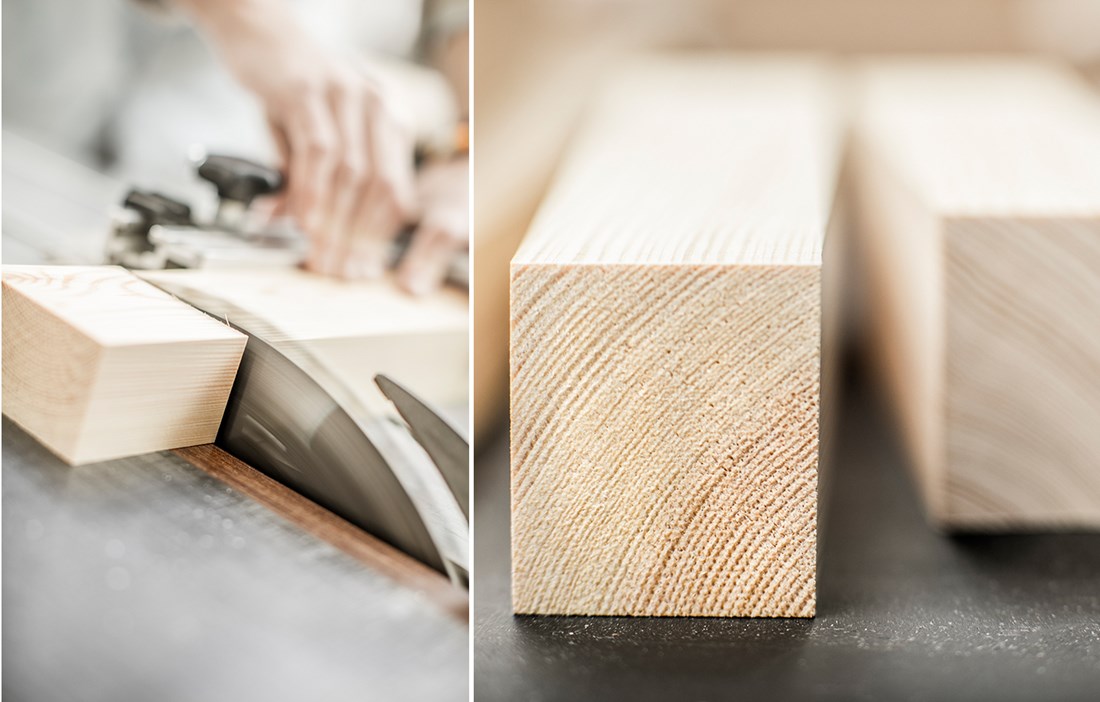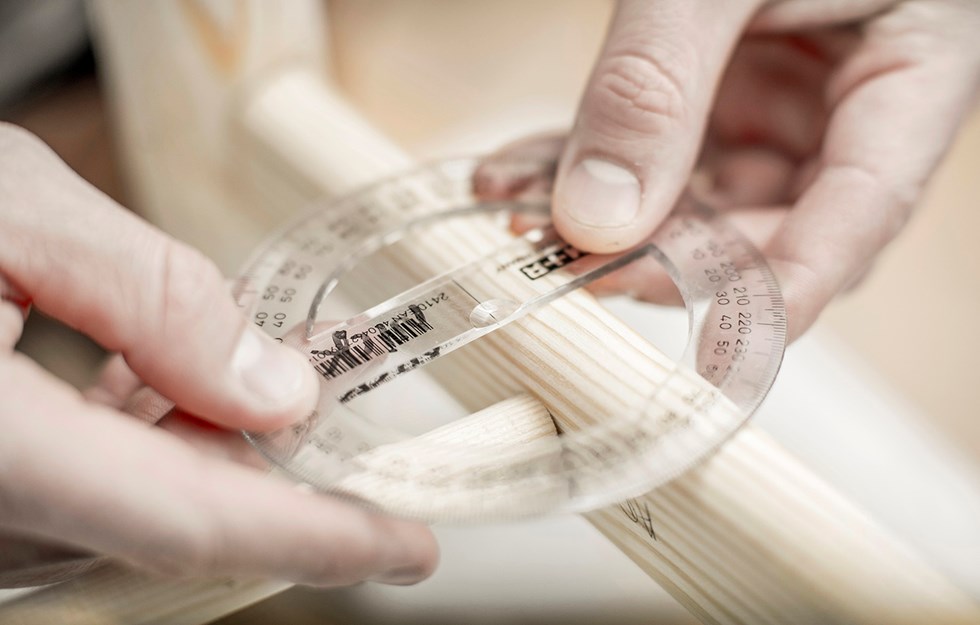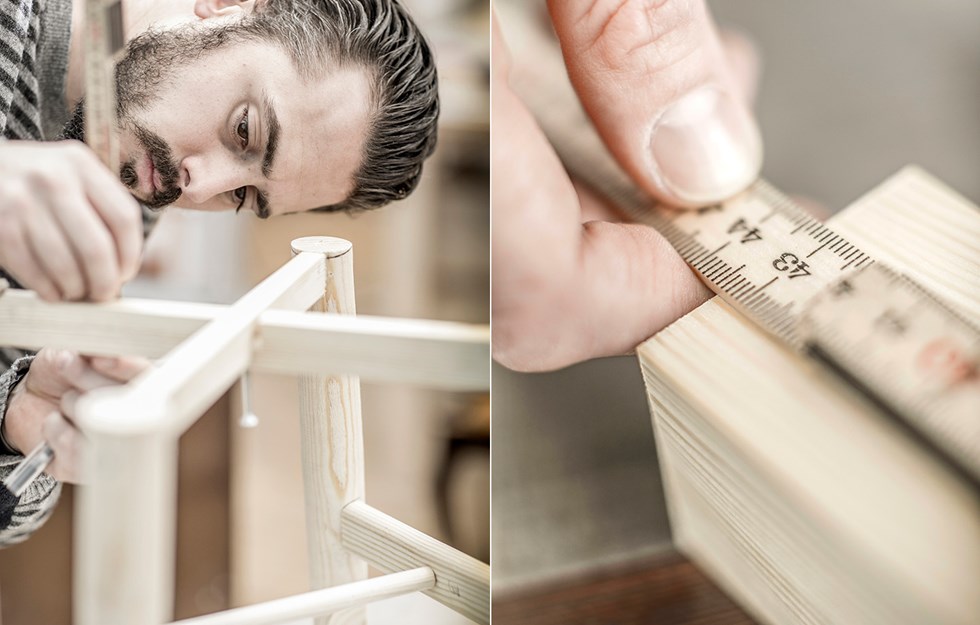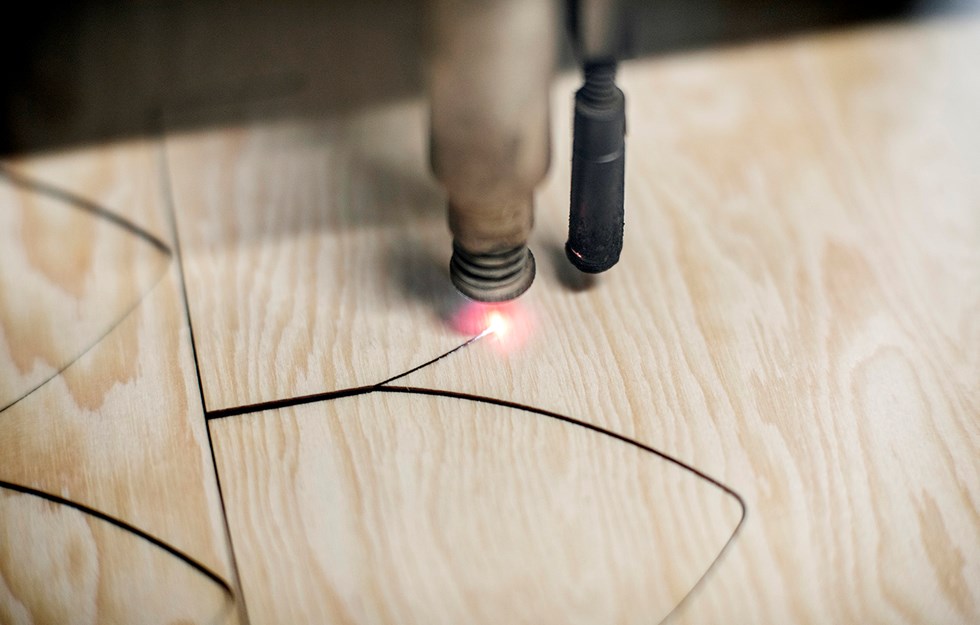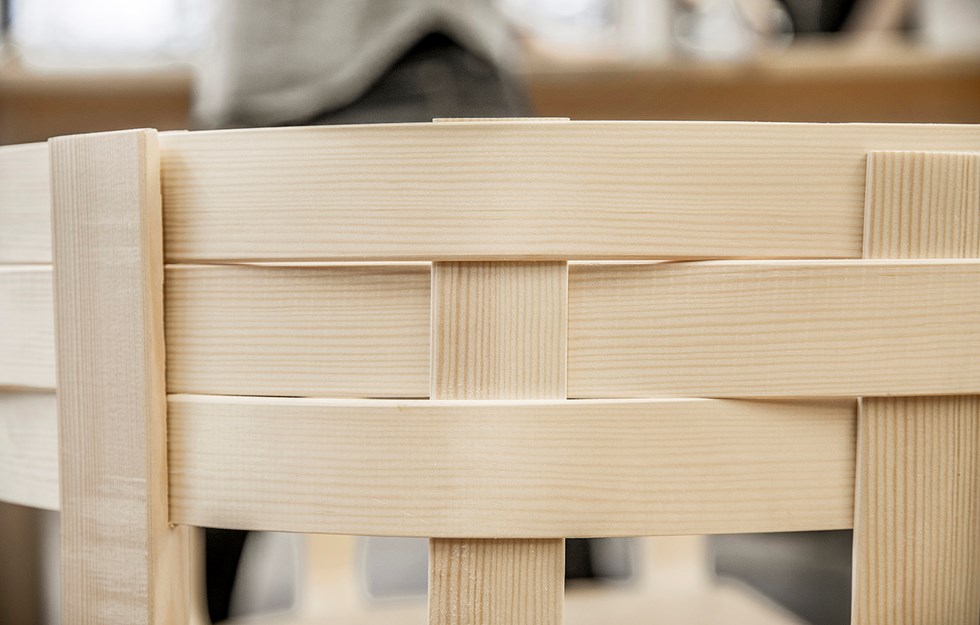Design in Pine – Swedish design for the Chinese market
In collaboration with Swedish Wood and the two Chinese furniture manufacturers Huari Furniture Company and Fujian Dushi Homelife Group, nine students on the Furniture Design programme at Carl Malmsten Furniture Studies have been commissioned to design pine furniture in a project that goes by the name of Design in Pine. The furniture has been designed for the Chinese market, where furniture companies see potential for Swedish design.
Swedish design in pine for the Chinese market
The furniture project Design in Pine is a unique collaborative project involving the industry body Swedish Wood, Carl Malmsten Furniture Studies and the two Chinese furniture manufacturers Huari Furniture and Fujian Dushi Homelife Group. The project has resulted in nine physical examples of innovative Swedish design in pine aimed at the Chinese market.
The purpose of the Design in Pine project has been to encourage the use of Swedish pine in Chinese furniture via Swedish design, and to promote pine as a natural and living material from sustainable Swedish forestry. Pine is ideal for furniture production thanks to the wood’s physical properties, and it is an obvious material choice in a world with such a strong focus on a sustainable society.
Over a few intense weeks in autumn 2016, the third-year students in furniture design at Malmstens worked on a real-world assignment for the Chinese furniture companies. The task was to design furniture for the Chinese market using the increasingly fashionable material pine.
Despite their geographical distance, the project has involved close collaboration. Communications have been conducted via email, Skype and social media, with discussions on materials, surface treatments, sketches and plans enabling the furniture manufacturers to produce prototypes to the students’ precise specifications.
This is the first time the students at Malmstens have had an opportunity to work on design assignments for international companies. They have gained new insight into the industry and the chance to show off the abilities and skills, approaches and values that they have acquired during their studies. As part of the Design in Pine project, the students have also had to wrestle with new parameters such as cultural and social differences between the countries, designs adapted to large-scale industrial furniture production and flat-pack transport logistics.
Concept development
Once the brief had been delivered in mid-October 2016, the creative work began. Due to a tight schedule, the students only had a few weeks to produce the three outline concepts that the Chinese furniture manufacturers had asked for. Inspiration came from Scandinavian nature, the properties of the material, but also the buzz and life of Chinese cities.
Continous process
The furniture manufacturers chose one concept per student to then be developed into a realisable product. Work in the following weeks featured a genuine and close dialogue with the furniture manufacturers. Cultural differences were bridged and together the two parties discussed any changes and improvements that could be incorporated into the project moving forward.
Here you can read some comments about the project from Leó Jóhannsson, Course director, Charlotte Dedye Apelgren, Director Interior and Design, and Kersti Sandin Bülow, Adjunct Professor of Design.
Swedish Wood
The industry body Swedish Wood works to promote knowledge, inspiration and development in the field of wood, whether for interior design or construction. Swedish Wood is supported by the Swedish sawmill and glulam industry. Sweden is currently the world’s third largest exporter of sawn wood products. Swedish Wood’s mission is to increase the use of wood in Sweden and selected export markets around the globe.
Swedish Wood also works to promote wood as a competitive material and a renewable resource for future generations. One of the key focus areas is strengthening wood’s position as an interior design material, and encouraging interest in the Swedish wood species among designers, furniture manufacturers and consumers.
Swedish Wood inspires designers and highlights modern new ways of using coniferous wood in interiors. At the same time, Swedish Wood spreads knowledge aimed at the wood processing industry about how best to finish and surface treat Swedish sawn wood products for the best end result.
It is gratifying to note that the use of wood continues to increase around the world. Thanks to its sustainable forestry and growing wood stocks, Sweden has a strong position in many markets, with China standing as one of the most expansive. This is a relatively new market for Swedish pine that Swedish Wood wishes to develop by supporting the design and production of new furniture prototypes.
The drive behind the project Design in Pine is to export Swedish design in order to support the export of Swedish sawn wood products. Swedish design is in demand among furniture manufacturers in China, who see an opportunity to launch Swedish pine by using the material in Swedish-designed furniture. The ease of use and visual attractiveness of pine makes it ideal for modern and stylish Swedish designs which, combined with the sustainability credentials, are a key factor in raising the status of Swedish wood products in China.
Carl Malmsten Furniture Studies
Carl Malmsten Furniture Studies, commonly known as Malmstens, is a centre within the Department of Management and Engineering at the Institute of Technology, Linköping University. The courses at Malmstens originate from the Olof School which Swedish designer and educator Carl Malmsten set up in 1930.
The school has since gone by various names and has been part of Linköping University since 2000. The campus, established on the island of Lidingö in 2009, offers four undergraduate programmes: in Furniture Design, Cabinetmaking, Furniture Upholstery and Furniture Conservation.
The learning environment maintains an openness between the programmes, aimed at encouraging the exchange and development of knowledge. The opportunities available to the students and staff to collaborate and seek out new solutions together establish a holistic approach and a good understanding of the various aspects of furniture and professional roles.
The students have unique opportunities to develop their craft, art and intellect. Rooted in tradition, they create furniture for the future, based on the educational programmes’ various points of departure. There is a shared focus on furniture and wood, based on concepts such as material knowledge, quality and sustainability. In short, factors that in the long term may influence – and in the best case improve – people’s everyday lives.
HUARI
The Chinese furniture manufacturer Huari Furniture (Huari) has its headquarters between the major cities of Beijing and Tianjin in the province of Hebei in north-east China. Founded in 1992, the company is part of the group Langfang Tiancheng Furniture Co, Ltd. Recent years have seen the company expand strongly, making Huari Furniture one of the largest manufacturers of solid wood furniture in the country.
Huari has over 3,000 employees, ten production sites and around 1,000 of its own stores all over China. In many of the biggest cities, they have established what they call “experience centres” that allow visitors to see and experience the company’s furniture collections in their proper settings.
With its innovative furniture collections of recent years, Huari has been aiming to reach a younger target group aged 25–30 who are about to furnish their first home. The collections are developed by Huari’s own design team or in partnership with leading national and international designers.
Huari holds ISO 9001 quality certification and ISO 14001 environmental certification. The company takes its environmental responsibilities seriously and in many ways embodies the eco-aware trend that characterises the Chinese market. In Huari’s case, this means systematically working on its environmental impact and finding cost-effective alternatives within its production processes.
DUSHI
Furniture manufacturer Fujian Dushi Homelife Group (Dushi) is based in the city of Shaowu in the north of the Fujian province in south-east China. The company started out in 1988 with 46 employees. Today it has over 1,200 employees and exports globally to destinations including Japan, the USA, Germany and France. Dushi works with various major international names such as IKEA.
Dushi specialises in the segments of storage, outdoor furniture, kennels and outdoor pet houses, all of which are made of wood. The products are sold under the three main international brands Jin Yang, Jinxiang and Jinzun. In the domestic market, Dushi uses the Mudianyin brand, which it now wants to develop with the help of a Swedish design concept.
The target group for Dushi’s furniture collections is mainly relatively wealthy couples in early middle age who are establishing themselves in the housing market and are ready to raise a family. They live in cities such as Beijing, Guangzhu and Shenzhen.
Dushi holds ISO 9001 quality certification and ISO 14001 environmental certification. Like Huari, Dushi also embodies the eco-aware trend that characterises the Chinese market. When it comes to the environment, the company acts responsibly, for example by engaging in sustainability issues, and only using certified forest raw material in its production.

